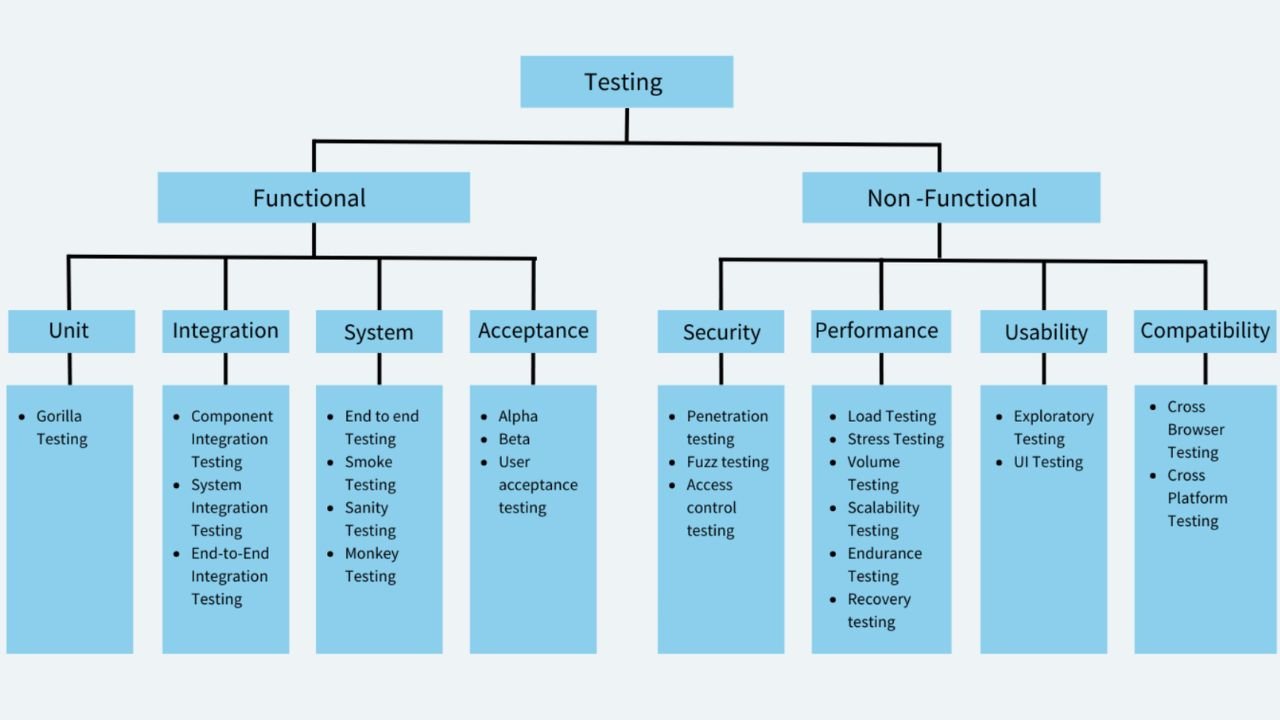The software development lifecycle needs testing as a fundamental procedure that ensures that software performs as required with smooth user interactions.
Software testing methodologies enable developers to detect program failures and performance weaknesses while conducting software behaviour validation before software delivery.
The absence of a proper testing strategy leads software applications to develop performance problems and security weaknesses along with usability issues that create adverse impacts for users as well as operational business processes.
Multiple testing approaches for software serve to detect program faults while enhancing performance and verifying operational behaviours before releasing the product.
Customer satisfaction depends on these methodologies because they establish software reliability and security and meet standard industry requirements.
Organizations that select suitable testing techniques achieve superior product quality, minimize post-release correction expenses and shorten the duration of their software applications’ market releases. Further, this Article explains different testing mechanisms as well as their critical role in creating software quality.
What are Software Testing Methodologies?
Structured assessment methods for software quality are known as software testing methodologies. Testing methodologies enable developers to check software conformity against product specifications by detecting all existing defects.
Software testing methodologies help developers check the functional capability along with operational speed and defend against threats and user interface quality to achieve system stability that satisfies customer needs.
Testing software involves two categories: manual testing and automated testing which require separate testing approaches based on project requirements.
Human testers conduct software examinations as manual testers without automation tools to validate real-world performance.
Specialized software tools operate through automated testing to execute test cases thus improving productivity alongside high accuracy with reduced human mistakes.
A comprehensive testing strategy emerges from understanding multiple methods which helps development teams achieve their project targets and provide high-quality software results.
Importance of Software Testing Methodologies
Software testing methodologies help in developing applications that are reliable, secure and also of high quality.
These methodologies implement their mission of intentional defect detection within software system(s) to prevent any costly downside after product release. This prevents the application from running the way it should.
The implementation of testing methodologies will result in the better performance of software with optimization of user experience and the meeting of both the industry standard and regulatory requirements.
This streamlined process of standardized testing helps organizations detect weaknesses in their system and helps the organization to stop cyber threats and protect confidential information to enhance the strength of their software security operation.
Testing methods that increase defects within the development stages of early debugging and/or troubleshooting through increased improvement in the maintainability of software.
These practices make software updates more streamlined and at the same time, keep operational integrity intact during the development phase to save on costs.
Testing methodologies that produce stable products that satisfy customers’ needs result in the development of user-friendly applications that satisfy the customers and eventually end up having levels of satisfaction.
Those businesses who do have their software tested by using testing for software functionality, usability, and performance will build that trust in users and beat competitors in the market.
Technology is moving forward, so it’s important to strongly test innovative scalable software solutions as this technology changes.
Types of Software Testing Methodologies
1. Functional Testing
The purpose of functional testing is to evaluate how well a software application reaches its agreed requirements and implements its required operations efficiently.
A complete testing process consists of four levels including unit testing, integration testing, system testing and user acceptance testing to validate the correct operation of system components as well as the complete system.
2. Non-Functional Testing
Non-functional testing measures important software attributes such as performance alongside security along with usability and compatibility so applications produce smooth user experiences.
Non-functional testing evaluates characteristics above functionality to enhance system reliability and operational efficiency as well as standard compliance.
3. Manual vs. Automated Testing
The test cases that human testers perform through manual methods, without automation support allow them to replicate real-world operations to confirm system functionality.
The automated testing process uses Selenium and JUnit tools to automate testing execution cycles which leads to faster testing decreased human mistakes and enhanced efficiency.
4. Regression Testing
The purpose of regression testing evaluate how recent software updates affect former software functionality to maintain system performance.
Agile development requires this important testing method because it verifies system health along with performance throughout multiple continuous development periods.
5. Smoke and Sanity Testing
The preliminary smoke test verifies that new software builds operate properly before complete testing begins since the specific method of sanity testing examines both particular bug corrections and small modifications to confirm they contain no new problems and verify that updated elements perform as intended.
Choosing the Right Software Testing Methodology
The appropriate software testing methodologies selection requires consideration of project difficulties and development methods together with budget considerations and system criticality.
The implementation of a testing approach should include both functional testing and non-functional testing with manual testing and automated testing for achieving broad coverage and reliable results.
Functional testing helps verify main software features but non-functional testing validates both system performance and security together with usability quality.
The testing of software updated regularly benefits from automation to speed up test cycles and keep costs low but manual testing proves most effective for exploring system usability methods.
The development and deployment speed of Agile and DevOps teams depends on continuous testing methods that maintain application stability during the entire process.
Proper test selection supports organizations in minimizing dangers while achieving superior software quality and delivering an intuitive user experience.
End-to-end testing success depends on the correct alignment of test methodologies with both organizational objectives and project business needs.
Conclusion
In conclusion, to develop high-quality software that fulfils user requirements and industrial standards both organizations need to understand various testing methodologies.
Organizations can achieve software excellence through the proper implementation of testing methodologies that enhance reliability and performance increase security and decrease both cost and development time.



